-
About
- About Listly
- Community & Support
- Howto
- Chrome Extension
- Bookmarklet
- WordPress Plugin
- Listly Premium
- Privacy
- Terms
- DMCA Copyright
- © 2010-2025 Boomy Labs


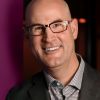 Stan Phelps
Stan Phelps
Listly by Stan Phelps
List for the upcoming book, Gray Goldfish, launching on 2/24/19. This leadership book helps leader successfully navigate the gray areas when managing across the generations. The book is authored by Stan Phelps and Brian Doyle.
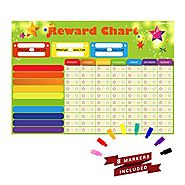
Many Millennials and Generation Z children were raised with star charts - when they did something good, they were rewarded by having a star placed next to their name on the refrigerator. Likewise, they received nearly instantaneous feedback from friends when the post something online. When these generations entered the workforce, they were frustrated by the lack of feedback from their managers. Many companies provide mandatory feedback annually and some never do it at all. That's a tough transition when you're used to getting feedback on a daily basis.
Zuora, a subscription management company, uses technology tools and forums that recognize and celebrate employee achievements as they occur, not a year later. They've found that this promotes individual growth across the generations - not just with Millennials. It's also makes it easier for Generation X managers - people who often times like to work independently and have a hands-off approach to management - to provide real-time feedback.
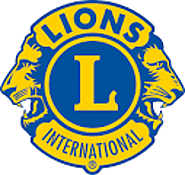
Despite being older, many Baby Boomers are not even thinking about retirement. In fact, many don't ever plan to retire. For that reason, recruiting them to your organization still needs to be a priority. The Lion's Club has specific guidance on how to recruit Boomers.
The Lion's Club found that the #1 reason Boomers might join their club is the self esteem and personal satisfaction that comes with volunteering. We see that in terms of coaching and mentoring in a business environment as well. #2 is making a difference in the community. Boomers still have strong ties to their activist roots in the '60's and the Lion's Club appeals to that when recruiting new members.
Whether as a volunteer or in business, these two attributes resonate with Boomers and make your organization more appealing.
Millennials and Gen X have a particular emphasis on ensuring their opinions are listened to and matter. One emerging practice that helps with this is holocracy.
Holacracy doesn’t advocate for a flat organization. Holacracy organizes work (and people) around circles within circles within circles. People within those circles have “roles” that give certain team members complete control over their domains. Someone at Medium, for example, is in charge of fonts and makes all font-related decisions. Contrary to headlines (including one on this website), Medium still has managers, because each circle has a leader. But unlike a traditional manager, not all decisions have to go through that one person, and that person can change–the structure of a Holacracy is very fluid. That’s why people don’t have titles, they have roles that often do change. The main objective is to distribute authority throughout an organization. Fewer decisions bottleneck through a boss, meaning faster decision making and in theory faster innovation. All of that makes Holacracy particularly appealing to companies that want to retain the benefits of fast-moving startups as they grow.
The David Allen consulting and training company converted to Holocracy in 2011. Here's some info on the case study: https://www.holacracy.org/david-allen-company. Zappos and Medium are making the transformation now.
From Keith Langbo, Founder and CEO of Kelaca, a people solutions firm in Raleigh, NC:
While I believe many of the publicized characteristics & behaviors of the 5 generations currently in the workforce are fairly accurate, I’ve had different experiences within Kelaca. We have team members in their 20’s, 30’s, 40’s, 50’s & 60’s, and while they all have some of the expected generational tendencies, they ultimately all want the same thing. They want to be a part of something special, a greater purpose or combined effort to make a change in our world. They all appreciate & require feedback & recognition. They all want to grow their careers while selflessly helping their teammate. They’re all committed to Kelaca, unless we stop being committed to their learning & development. My point is that there are people in every generation that fit within our culture, but our culture doesn’t fit everyone. So, I believe that the generational behaviors are blending, and that it ultimately comes down to the individual vs. company culture alignment.
The different generations are stereotyped. The biggest personality traits of Boomers versus Millennials are quite different, but in the end, all employees want much of the same. They all want to be valued for what they do, although some define value as money while others define it as praise. They want to feel good about what they do. In some of the research I did for The Amazement Revolution, I discovered that great places to work found ways to let employees work on what they were best at and enjoyed most. For example, one of our employees (a Millennial) loves video work, and she’s good at it. So, we made a small part of her job creating and editing videos. Every week she does at least one short video. Throughout the week she may spend two or three hours on video work, but it is enough to make her excited about working here. But, don’t take it from me. Google does the same thing with its engineers. They want their engineers to spend 20% of their time focused on projects of their choice, giving them the opportunity to work on what they enjoy most. As much as a company needs to recognize the generational differences, they also need to exploit the unique talent and passions of the individual employee, regardless of how old they are.
-- Shep Hyken, customer service/experience expert and New York Times bestselling author of The Amazement Revolution

From Ian Golding, CEO/Founder of the Customer Experience Consultancy, Non-Executive Editor of Customer Experience Magazine
The best example I can give you in the UK, is an online retailer called N Brown Group (http://www.nbrown.co.uk/our-operations/our-brands). One of the largest online retailers in Europe, they have established themselves as a retail house with multiple trading brands, all aimed at different consumer segments. Their desire to have absolute clarity as to who the brand is aimed at has seen them grow sustainably, whilst others have faltered. Examples of these are as follows:
JD Williams – aimed at ages 45 plus and their families
Simply Be – aimed at all women of all sizes
Jacamo – aimed at larger men
In a world where all of the ages need their needs and expectations to be met, it is rare to see a retailer having the courage to define completely separate trading entities for different generations.
Bregman: Gen Z moves fast and something that was trending yesterday is “uncool” today. By the time most brands are able to integrate a trend into their marketing message, it’s usually too late. One mistake is using irrelevant or old content. It just comes across as trying too hard and uncool. Wendy’s and Denny’s are two brands that do a great job of tweeting things that are relevant and relatable to Gen Z.
Takeaway: As an employer, don't shoot for a catchy, fleeting recruiting or motivational strategy. Develop approaches that will resonate for a while (like making an employee's job meaningful).
Blakley: Another mistake is using influencers the wrong way. A lot of brands try to control everything the influencer is doing when they should be giving them most of the creative control. There’s a reason the influencer has built an audience and they know what their audience likes. Also, some companies use influencers that don’t make any sense with who their brand is. For example, a sports league using influencers who have never said anything about that sport or don’t appear to even enjoy the sport doesn’t make sense and the brand comes across as incredibly inauthentic.
Takeaway: Leaders need to be authentic. You can never fake your way through leadership - especially with younger, more critical generations

In January, Google launched the Google IT Support Professional Certificate. With no previous experience needed, learners in the program can go from beginner to entry-level job ready in about eight months. They are now bringing the certificate to 25 community colleges in seven states across the country.
To build pathways to jobs, those who complete the certificate can choose to share their information directly with over 20 top employers looking to hire entry-level IT Support Specialists.
Since its launch, almost 40,000 people have already enrolled in the program on Coursera and over 10K of those have received scholarships from Google.
Example:, Taslim Mahamud, has already started his new job in IT support. As a first-generation American from Bangladesh, Taslim was determined to learn programming and to find ways to use technology for good, especially for those back home in Bangladesh. After graduating high school, Taslim enrolled in the CUNY Grove School of Engineering, but after his first semester of programming courses, he started to struggle. Without the support system he had relied on to excel in high school, Taslim’s grades plummeted and he decided to take a year off.
Taslim was without a plan, so his counselor suggested he look into Year Up. After six months of training in IT Support, the Year Up program placed him in an internship at the Ford Foundation.
As the end of his Year Up experience neared, Taslim knew he was going to have to find work - and fast. He picked up a contract job, but it was only temporary. When Taslim found out about Google’s IT Support Professional Certificate, he applied for a scholarship from Google and a week later he started the program.
Taslim continued to move through the coursework, and started to interview for jobs. When he applied for an IT Associate position at Poppin, an office furniture and supply company, his qualifications from the IT Support training helped him land the job. He has been working at Poppin ever since.
Google.org is providing a grant to JFF, a workforce development nonprofit, to help community colleges better align their IT offerings with employer needs by integrating the Google IT Support Professional Certificate into their curriculum, providing students an opportunity to jumpstart their careers in IT Support.
As more students enroll in this IT certificate program, more employers are signing on to consider hiring learners like Taslim who complete the certificate. We’re excited that fourteen more organizations are joining Bank of America, Walmart, Sprint, GE Digital, PNC Bank, Infosys, TEKSystems, UPMC, and of course, Google to recruit graduates of the program. They include Hulu, Cognizant, RICOH USA, MCPc, and Walmart family companies: Sam’s Club, Shoes.com, Jet, Allswell, Bonobos, Hayneedle, Modcloth, Moosejaw, Store N o 8 , and Vudu.
Rustin Keller, CEO of JJ Keller & Associates helped lead the company through a reinvention of itself and its processes as regulations for the transportation industry changed significantly. This meant turning a primarily print-based safety and compliance solutions provider into a technology-focused intellectual property company. As a result J. J. Keller moved to expand the number of associates who work remotely, especially in IT and sales positions which, as we have seen at Apple and Google are now being filled by Gen Z.
By providing remote working arrangements and flexible work schedules, on-site clinics, progressive companies, and their leadership teams are stepping up to provide what they are hearing is important to associates new to the workplace. Innovative approaches such as Design Thinking to bring in a wide range of thoughts and opinions to shape the future.
From Mike Wittenstein, President and CEO of StoryMiners:
Chick-fil-A, a southern-born chicken sandwich restaurant has integrated a values-based culture, four-generation workforce, penchant for hospitality, innovation, and quality, and an unbeatable ownership model that stokes performance (many CFA stores do double what their same-size/same-location competitors do) while staying on-brand. Inside the stores, employees are selected on interpersonal skills, drive, and compatibility with workplace culture. Managers lead by example and share life lessons and professional skills along the way. Support systems are clear and co-designed with employees and customers.
Here's an anecdote about military life:
Many of us have had a fantasy about slipping off anonymously to lay around on a beach the rest of our lives. Counter-intuitively, this course of action may not be the best for our psychological health. A spate of recent studies have shown that humans thrive when two conditions are met: we must feel a sense of belonging and believe that our labor is important. We often look to our workplace to fulfill these two fundamental human needs, though some are better organized to provide our place and purpose.
The military is exceptional at giving its members a sense of belonging and importance. Each service abounds in ways that make a member feel part of the "in-group". Everyone must complete rites of passage such as basic training, technical schools, and fitness tests. Service-specific jargon typified in TLAs (three letter acronyms) create a common language. If you understand me when I say, "As a CGO, I went on an OCONUS TDY where the DFAC only served MREs", you have probably been in the military. For those of you who haven't, this translates to "as a young officer, I went on an overseas business trip where the cafeteria only served prepackaged meals". Uniforms, rank, ribbons/medals, and unit patches instantly identify someone not only as a military member, but which subgroups that individual belongs in. Units also have legends, songs, traditions, heroes, symbols, mascots and mottoes which the civilian world may only experience at school or with sports teams. Taken altogether, many servicemembers understand that they may take a bullet for a coworker and assume those around them would do the same for them. This sense of belonging fosters the trust necessary for life-and-death assignments.
In fact, communicating the high stakes to servicemembers is the cornerstone of how the military makes its individuals feel their effort is important. Everyone from the general commanding operations in active conflicts to the troop turning wrenches in Kansas is told that his or her efforts protect the the lives of their families and fellow servicemembers and the very foundation of the free world. It is telling that the Soldier's Creed includes "I am a guardian of freedom and the American way of life". Military members are constantly feted in codified quarterly awards programs, promotions, and with ribbons and medals. Annual performance reports are less critical feedback and more a highlight reel of accomplishments told in action-impact-results form. Supervisors take great pains to link each individual's actions to missions and lives saved.
Is it any wonder, then, that many veterans have a crises of identity when leaving the service? A common refrain from veterans, especially those forced to leave due to injury, is that they miss the sense of camaraderie and purpose they had while in the military. I have learned a lot from my military service on how to foster community and communicate worth to coworkers and family members. While a "full court press" of military attributes would be disingenuous for many organizations, small tweaks can make a big difference. Instead of treating a work-intensive quarterly budget report as a pain to get through, treat it as a rite of passage with extra recognition and privileges on the other side. When thanking a team member, be sure to mention not just the difficulty of the task but how completing the task made an impact to the organization or customers. Most importantly, though many people would like a short-term reprieve from responsibilities, no one wants to feel lonely or useless. Our psychological health depends on knowing how we fit in and completing difficult tasks that are considered important to others.
-Melanie Frost, Major, US Air Force Reserve
From Will Barfield, President and CEO of Barfield Revenue:
"I've been in recruiting for 14 years now, and I have placed folks from every generation into companies of every type. I have seen fits that seemed ideal absolutely come apart, and I've watched as matches you'd never dreamed would work turn into long-term employment. The common thread that seems to make things work? Regardless of age or generation or label? Strong, engaged management. Good leadership, plain and simple. It's becoming more and more difficult to find excellent managers nowadays, but when you see organizations with low turnover rates and great Glassdoor reviews, it's not because of the Foosball tables and and the craft beer on tap and the unlimited vacation policies. It's because intelligent, in-tune leaders are managing to the strengths of their employees, not managing to a "one-size-fits-all" mentality. Tow the line or get off the boat? That's a sure-fire way to leak talent quickly. Boomers and Millennials and women and men alike want the same thing, ultimately. Learn a bit about what I like and need -- engage me. Once a great manager figures out which buttons to push and what levers to pull, that leader can run a well-oiled machine, regardless of the age of the parts."
From Dave Swanson at Charles Schwab:
"My current company, a Financial Services group, does an amazing job of focusing on the various communication styles between generations. The Executive team will travel quarterly to different cities to share updates face to face with their employees. After a meet and greet with the Executive team, smaller groups conduct a “town hall” in order for the Senior Leadership to get to know individuals from all Generations and focus on the questions they want to ask. Work/Life balance is always a discussion with Leaders and they always like to share some of their latest adventures with families and trips. Being able to have an Executive team that is personable and approachable makes my company a hidden gem within an industry that goes under much scrutiny."
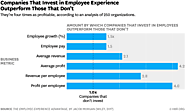
In Jacob Morgan's recent book, The Employee Experience Advantage, he looked at 252 organizations around the world and found that companies who do a great job investing in employee experience have 4.2x the average profit and 2.1x the average revenue when compared to organizations that don’t do a great job of investing in employee experience. Not surprisingly, these same organizations also appear on lists such as the 24/7 Wall Street Customer Service Hall of Fame and the American Customer Satisfaction Index twice as often.
https://hbr.org/2017/03/why-the-millions-we-spend-on-employee-engagement-buy-us-so-little
Organizations are spending hundreds of millions of dollars on employee engagement programs, yet their scores on engagement surveys remain abysmally low. How is that possible? Because most initiatives amount to an adrenaline shot. A perk is introduced to boost scores, but over time the effect wears off and scores go back down. Another perk is introduced, and scores go back up — and then they fall again. The more this cycle repeats itself, the more it feels like manipulation. People begin to recognize the short-term fixes for what they are.
When organizations make real gains, it’s because they’re thinking longer-term. They’re going beyond what engagement scores are telling them to do in the moment and redesigning employee experience, creating a place where people want, not just need, to work each day. But what does that mean, and what does it look like?
To understand this, I interviewed 150 psychologists, economists, and business leaders around the world. The executives included heads of HR, innovation, IT, and diversity, and they represented a range of industries and sectors (tech, manufacturing, retail, professional services, education, startups, and others). Based on those conversations, I identified three environments that matter most to employees: cultural, technological, physical. Next, I worked with Serge P. da Motta Veiga of American University and Steven King of Emergent Research to develop survey questions to determine how organizations are faring in each area. Support for the research was provided by Cisco and Lever.
After analyzing more than 250 diverse organizations, drawing on the Fortune 100 and various “best workplaces” lists, I found that over half the companies were rated poorly by their employees in at least one of the three areas, and 20% got very low scores across the board. Although 23% were making strides in all three areas, just 6% were investing heavily in all three — and those “experiential organizations” (Adobe, Accenture, Facebook, Microsoft, and others) saw performance gains.
When I interviewed business leaders at the top-scoring organizations, they told me their investments in the three employee experience environments had led not only to happier employees but also to larger talent pipelines and greater profitability and productivity. But that was just anecdotal evidence. So I looked at appearances in “best of” lists. For instance, compared with the other companies I studied, those that invested most heavily in employee experience were included 28 times as often among Fast Company’s Most Innovative Companies, 11.5 times as often in Glassdoor’s Best Places to Work, 2.1 times as often in Forbes’s list of the World’s Most Innovative Companies, 4.4 times as often in LinkedIn’s list of North America’s Most In-Demand Employers, and twice as often in the American Customer Satisfaction Index.
Some of the most compelling evidence lay in the financial data. I wasn’t able to find every single metric for every single company, but the results were still striking. Compared with other companies, the experiential organizations had more than four times the average profit and more than two times the average revenue. They were also almost 25% smaller, which suggests higher levels of productivity and innovation.
W170224_MORGAN_COMPANIESTHAT
And they outperformed the S&P 500, the NASDAQ, Fortune’s 100 Best Companies to Work For, and Glassdoor’s Best Places to Work, in addition to the other organizations I studied, by considerable margins.
W170224_MORGAN_HOWINVESTING
Looking at the data, it’s clear that there is a significant return to organizations that focus on employee experience over the long term, not just engagement in the here and now. Adobe, for instance, has an EVP of customer and employee experience and is making considerable investments in real-time employee feedback programs, beefing up diversity and inclusion efforts, giving employees access to consumer-grade technologies, and building workspaces according to multiple floor plans to accommodate different styles and preferences. LinkedIn and Accenture both host HR hackathons, where employees help break down and rebuild the people and HR functions to reflect the work that they really do (and need to do). Airbnb treats its physical space like software: The company is constantly experimenting with different layouts and floor plans, and employees get to volunteer to design and build their conference rooms, with a modest budget. KPMG and the San Diego Zoo do an amazing job of telling their organizational story and helping employees understand the impact their contributions have on the organization, which fosters a feeling of belonging and purpose.
Your organization might want to take a different approach altogether. The important thing is to shift your attention away from those fickle engagement numbers and focus on how people experience your organization day by day. This means moving away from putting people into outdated workplaces, and redesigning workplaces and practices around your employees.
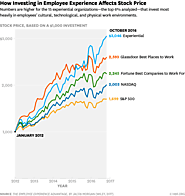
Everyone in the organization - from doctor to janitor - is considered and given permission to act as a "caregiver". The Cleveland Clinic has trained 51,000 employees on the emotional and experiential aspects of caregiving. They also fuse everyone's work together by giving all the employees the title of "caregiver". From Would You Do That to Your Mother.
The drive-thru restaurant in TN uses a 60-point psycho-metric survey to ensure the teenagers they hire meet their values. The teenagers then receive more than 120 hours of training and on-going mentoring. Their turnover is 1/3 of the industry average and they have lost just 7 general managers in 33 years.
Leadership spends 10% of their time daily mentoring team members on a skill or aptitude.
From Would You Do That To Your Mother?
Every person whom customers reach is trusted to change processes, procedures and policies to improve their situation. 92% of First Direct customers say they would recommend the bank to someone else.
Indra Nooyi, CEO of Pepsi, personally writes letters to the parents of her top 400 executives thanking them for instilling the values in them that are directly benefiting Pepsi. "Thank you for the gift of your child to our company." From Would You Do That To Your Mother?
At the Lung Transplant Foundation, we focus on building depth and breadth across the organization as we work towards a common goal. Since lung diseases have no age-related boundaries, neither do we. While the Baby Boomers bring an array of experiences that have helped define and structure the organization, the inclusion of Millennials and Gen X team members add vibrancy and innovation that helps ensure our growth. As we share ideas, we look for compromises that bring sound, sustainable business practices.
From Emily Everett, Executive Director, Lung Transplant Foundation
Initially established in a hospital in Hawaii to provide emotional support to patients and family members, many hospitals now employ a support system for employees called "Code Lavender". It gives emotional support to caregivers to help them overcome highly emotional and draining situations. For younger generations that have had additional emotional support throughout their lives, this practice is particularly helpful. From Would You Do That to Your Mother.
Oberoi Group in India - manager of exclusive, high-end properties - invests in emotional intelligence training for employees. Instead of having their frontline/customer-facing employees guided by a manual or set of rules, they invest in coaching training that leads to the right response for the right guest.
Armed with this training, employees can build the skill set they need to react properly to situations. From Would You Do That to Your Mother.
Safelite encourages and trusts employees to make decisions based on what they perceive to be the right decision and live in the "gray". They can decide when to make exceptions. CEO Tom Feeney says he's seen a big change in the behavior of his front line and how they personalize the work they do to accommodate different customers. From Would You Do That to Your Mother.
From Jim Holz, Director of Client Services at MSA Professional Services
At MSA, we have a great example in our “Next50 Steering Committee”. Below is an excerpt from their Charter:
I. PURPOSE
The purpose of the Next50 Steering Committee is to create and foster a work environment that is engaging and fulfilling, and promotes the success of MSA Professional Services through the lens of the young professional.
II. CORE FUNCTIONS
The Next50 Steering Committee will have five Core Functions:
Assist, personnel within MSA on young professional ideologies and reactions to corporate policy
Educate, young professionals on MSA culture, business practices and core values to show how they fit into the greater scope of the industry
Introduce, young professional ideas and policy to MSA
Retain, young professionals within MSA to create a stable base to transition towards the future
Attract, young professionals outside of MSA to build on that stable base
This group regularly conducts “listening sessions” at each of our offices to learn what is on the minds of the younger generation professionals. In the last year, we went away from annual performance evaluations to a monthly check in format instead, based on recommendations from the Next50.
This group has also lead company-wide “Big Reads” of various business-related books.
Employees in Singapore to benefit from comprehensive HR mobile app with a first-ofits
kind system-integrated chatbot that instantly delivers answers customised
according to employees’ profiles
Singapore, 5 June 2017 – OCBC Bank has become the first bank in
Singapore to launch a comprehensive human resource (HR) mobile
application (app) to meet the needs of its employees. The app, HR In Your
Pocket, includes an artificial intelligence (AI)-powered chatbot that is
integrated with the Bank’s HR information system. This chatbot can provide
immediate responses that are specific to each employee.
HR In Your Pocket is set to benefit OCBC Bank’s employees in Singapore by
giving them access to a holistic HR resource centre for leave applications,
tracking of employee medical and lifestyle expense reimbursement claims,
internal job postings and OCBC Bank’s people directory.
Employees can also ask the app’s in-built chatbot, ‘Buddy’, HR-related
questions and get an instant response. As ‘Buddy’ is fully integrated with the
Bank’s HR system, the questions can be individualised: The employee can
MEDIA RELEASE
Media Release
Includes suggested Tweets,
Facebook posts, keywords and
official hashtags
2
ask if he or she has met mandatory leave requirements or enquire after the
status of an expense claim. Buddy can then provide accurate and
personalised answers.
HR In Your Pocket was developed in-house and feedback was gathered
internally, with employees sharing that they wanted to be able to access HR
information and perform HR-related matters anywhere and anytime, without
having to contact the HR team or be seated at their desks.
HR In Your Pocket’s In-Built Chatbot, ‘Buddy’
‘Buddy’ complements OCBC Bank’s HR team to deliver an enhanced
employee experience, reducing the time and effort employees need to spend
on HR-related matters. As it is integrated with the Bank’s HR information
system, ‘Buddy’ provides accurate answers specific to each employee, such
as his/her annual leave balance or medical expenses reimbursement claim
status. Other questions that ‘Buddy’ can answer include those related to staff
entitlements and practices, HR policies and OCBC Bank’s employee code of
conduct.
Employees can ask ‘Buddy’ questions by either typing the questions in the
chat window or using voice commands, as with Apple’s virtual personal
assistant, Siri. ‘Buddy’ has human-like conversational skills and natural
language processing capabilities,

Stan Phelps is a Forbes Contributor, IBM Futurist, and TEDx Speaker. His keynotes and workshops offered at PurpleGoldfish.com focus on how to create meaningful differentiation to win the hearts of both employees and customers. He’s the best-selling author of: Purple Goldfish -12 Ways to Win Customers and Influence Word of Mouth, Green Goldfish - Beyond Dollars: 15 Ways to Drive Employee Engagement, Golden Goldfish - The Vital Few, Blue Goldfish - Using Technology, Data, and Analytics to Drive Both Profits and Prophets, Purple Goldfish Service Edition - The 12 Ways Hotels, Restaurants and Airlines Win the Right Customers, and Red Goldfish - Motivating Sales & Loyalty With Shared Passion and Purpose. Connect with me at stan@purplegoldfish.com or +1.919.360.4702.